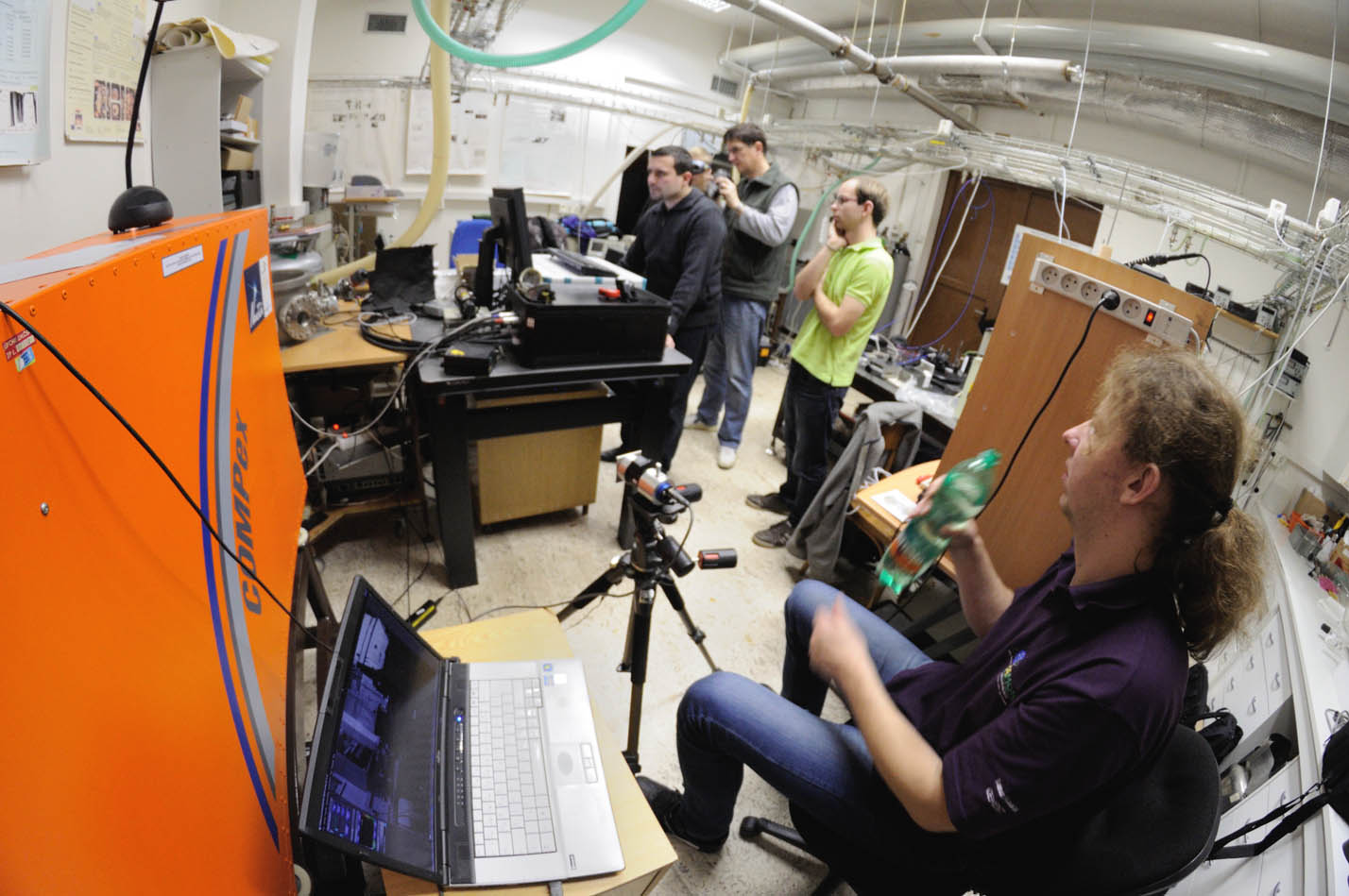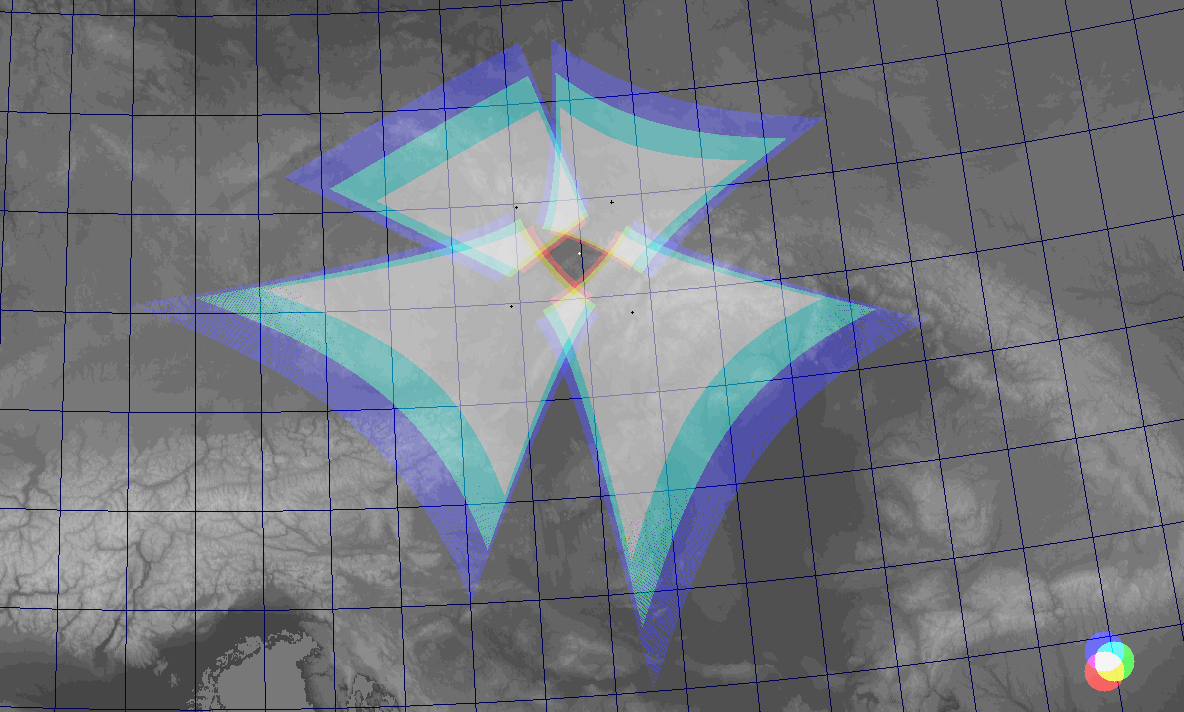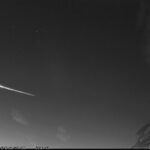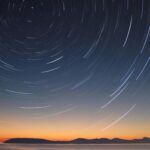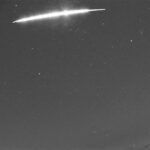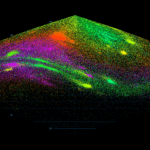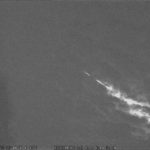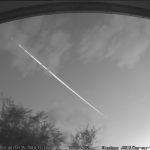Interplanetary matter enters the Earth´s atmosphere, often in the form of small lithic rock or metallic bodies. In most cases these bodies burn in the atmosphere and are totally lost. However, during astronomical spectroscopic monitoring using spectrographs, we can keep a record of their existence and chemical composition by acquiring their emission spectra of the plasma formed during heating in the atmosphere. Our goal is to collect large sample of CCTV/CCD meteor spectra for physical/chemical characteristics of incoming material together with high quality orbits suitable for EDMOND database.
The first spectroscopic observations in CEMeNt (Central European video MetEor NeTwork) network were regularly performed on experimental setup from Kroměříž during July and August 2013. Experimental mobile spectrograph was based on a highly sensitive CCD video camera Watec 902 H2 Ultimate with 1/2″ CCD chip Sony ICX 429ALL. Video was recorded in a standard PAL B signal with an effective resolution of 720 × 576 px, the sensitivity of the camera in BW mode is 0.0001 lx. The field of view was 76° × 61°, the system used a fast Goyo lens (f/1.0) with a variable focal length (3-8 mm). FOV and resolution of the CCD chip allowed the use of a holographic diffraction grating with density of 300 lines/mm, resolution of the mobile spectrograph was 56.8 Å/px. Based on this experiments the first fixed spectrograph was set up at the Valašské Meziříčí Observatory in July 2014. The spectrograph was based on a highly sensitive CCD video camera VE 6047 EF/OSD (spectrograph designation VM_N). The camera is equipped with 1/3″ CCD chip Sony ICX 673AKA with an effective resolution of 720 × 576 px. Video was recorded in a standard PAL B signal, the sensitivity of the camera in BW mode is 0.002 lx. The field of view was 60° × 48°, the system used a fast Tokina lens (f/0.98) with a variable focal length (3-8 mm). FOV and resolution of the CCD chip allowed the use of a holographic diffraction grating with density of 500 lines/mm, resolution of the spectrograph was 32.8 Å/px (Koukal et al. 2015). This spectrograph was in operation from July 2014 until October 2016. At present, two types of spectroscopic wide field systems in CEMeNt network are in operation. The spectrographs are located at the Valašské Meziříčí Observatory and at the Teide Observatory on the island of Tenerife in the Canary Islands. Older systems are based on CMOS video cameras QHY5L-IIM (spectrographs VM_NW and VM_SW) and are in operation since October 2015 (Koukal et al. 2016). The QHY5LII-M camera is equiped with 1/3″ CMOS chip Aptina MT9M034 with an effective resolution of 1280 × 960 px, systems use fast Tamron M13VG308 megapixel (2.3 MPx) lenses (f/1.0) with a variable focal length (3-8 mm). Field of view was between 80° and 89° horizontally (spectrographs VM_NW and VM_SW), since March 2017 is field of view of the spectrographs between 64° and 69° horizontally. At the same time the spectrographs have a new designations: SPSW V4, SPSE V5, SPNE V6. FOV and resolution of the CMOS chip enables the use of holographic diffraction grating with density of 1000 lines/mm, resolution of the spectrographs was between 9.7 and 10.8 Å/px (until March 2017). Since March 2017 is resolution of the spectrographs between 8.0 and 8.6 Å/px. In this configuration the spectrograph reaches stellar limiting magnitude +4.5mag, the faintest recorded meteors then have relative magnitude up to +2.0mag. Magnitude of meteors with measurable spectrum have to be at least -2.0mag.
Newer spectrograph uses a highly sensitive CMOS video camera PointGrey Grasshoper3 GS3-U3-32S4M-C. The spectrograph is located at the Valašské Meziříčí Observatory (spectrograph designation SPNW V7, instead of the old spectrograph VM_N with the VE 6047 EF/OSD camera), spectrograph is in operation since August 2016. The second spectrograph of the same type is located at the Teide Observatory (spectrograph designation PGRACAM-TE), spectrograph is in operation since November 2016. The GS3-U3-32S4M-C camera is equiped with 1/1.8″ CMOS chip Sony Pregius IMX252 with an effective resolution of 2048 × 1536 px. The CMOS chip used in the camera GS3-U3-32S4M-C has a high quantum efficiency (76 % at 525 nm) and high dynamic range (71.34 dB). Field of view is 60° × 45°, systems use VS technology megapixel lens (f/1.4, 9 Mpx) with a fixed focal length (6 mm). FOV and resolution of the CMOS chip enables the use of holographic diffraction grating with density of 1000 lines/mm, resolution of the spectrographs is 4.8 Å/px. In this configuration the spectrograph reaches stellar limiting magnitude +5.5mag, the faintest recorded meteors then have relative magnitude up to +3.0mag. Magnitude of meteors with measurable spectrum have to be at least -1.5mag. Detection of meteors is done by UFOCapture (QHY5LII-M) or UFOCaptureHD (GS3-U3-32S4M-C) software (SonotaCo 2009, 2014), and for astrometric and photometric processing UFOAnalyzerV2 software (SonotaCo 2009) is used. In the past (in 2014) the MetRec program was used for 3 months with a VE 6047-based system. Orbits of meteoroids in the Solar system are calculated using the software UFOOrbitV2 (SonotaCo 2009). Deceleration is counted out of this software as an exponential fit of the actual speed of the meteor for each frame.
Since 2015, CEMeNt is cooperating on spectroscopic experiments with J. Heyrovsky Institute of Physical Chemistry (Institute of the Czech Academy of Sciences) and Valašské Meziříčí Observatory. In order to better understand the chemistry and spectroscopy of meteor plasma, we implemented calibration free data processing in emission data evaluation and comparative algorithms for an analysis of reference spectra acquired in laboratory experiments involving Laser Induced Breakdown Spectroscopy of Meteorite samples, Laser Induced Sparks in atmospheric gases and electric discharges, together with in-situ simultaneous measurement by meteor spectrograph and high resolution Echelle instrument. The results have been compared with real meteors spectra obtained from EDMOND. All of the measurements are realized with professional laboratory equipment at J. Heyrovsky institute in Prague.
REFERENCE ARTICLES
In case you use EDMOND meteor spectra database, please refer to:
[1] Kornoš L., Koukal J., Piffl R., and Tóth J. (2014a). EDMOND Meteor Database. In Gyssens M., Roggemans P., Zoladek P., editors, Proceedings of the International Meteor Conference, Poznań, Poland, Aug. 22-25, 2013, International Meteor Organization, p. 23-25.
[2] Koukal J., Srba J., Gorková S., Lenža L., Ferus M., Civiš S., Knížek A., Kubelík P., Kaiserová T. and Váňa P. (2016). Meteors and meteorites spectra. In Roggemans A. and Roggemans P., editors, Proceedings of the International Meteor Conference Egmond, Netherlands, June 2-5, 2016, International Meteor Organization, p. 137–142.


